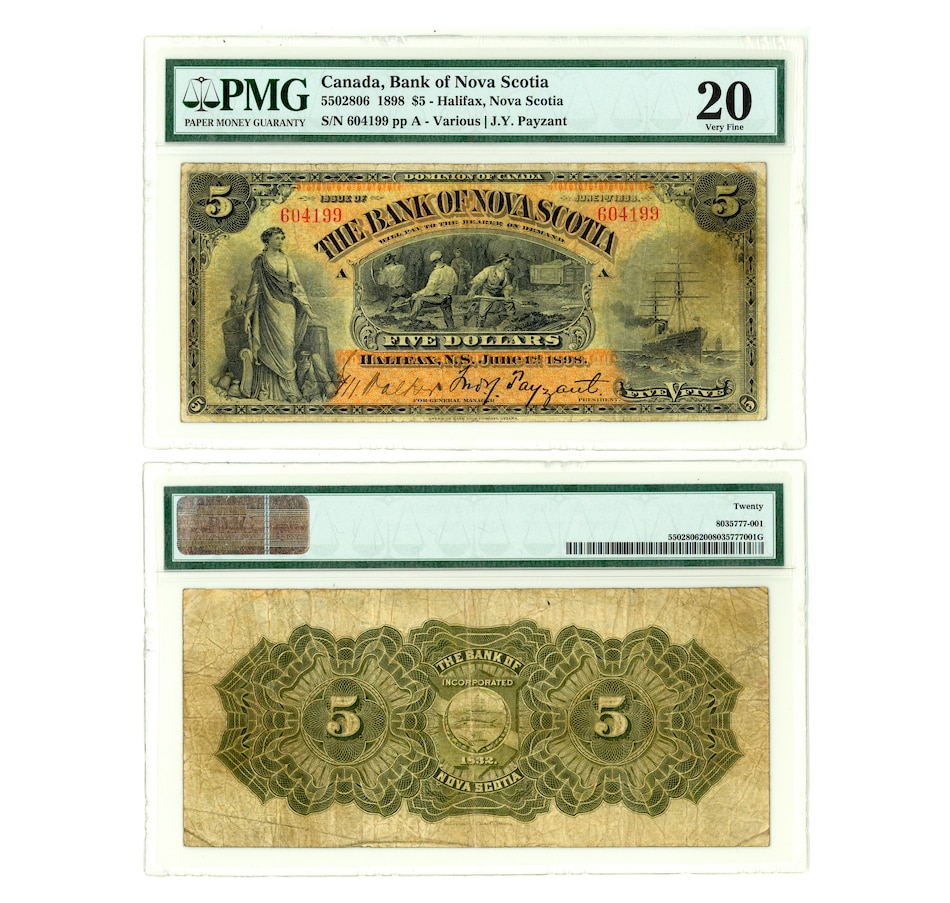$5 Bank of Nova Scotia 1898 PMG Certified Very Fine 20 (S/N 604199 pp A)
The Bank of Nova Scotia was formed in 1832, and was made up of a group of merchants and ship owners. For 40-odd years the bank was very small, with the first agency established in Windsor, Nova Scotia in 1837. By the end of 1839, Pictou, Annapolis, Liverpool and Yarmouth all had agencies of the bank. With the building of the Canadian Pacific Railway in the 1880s, the bank established branches in Winnipeg and Minneapolis. Branches were added in Chicago in 1890 and in Boston in 1899.
As the 1920s began, the Bank of Nova Scotia was active in every Canadian province, and maintained 30 branches outside Canada. After a consolidation of operations during the Depression and World War II, expansion was renewed through new branches and additional services. To facilitate the holding of gold, the bank introduced a unique gold certificate in 1958. The bank quickly became Canada's largest trader, in both certificates and in bullion. The 60s and 70s saw a greater emphasis on international representation. Today the Bank of Nova Scotia is recognized as one of the world's leading international financial institutions.
• Front design: allegorical female/mining scene/steamship approaching viewer
• Back design: lathework, counters, bank name and bank seal
• Charlton Catalogue reference: 550-28-06
Includes:
• 1937 $2 Note BCS Certified as Choice Uncirculated 63 (Serial Number L/R3351954)











